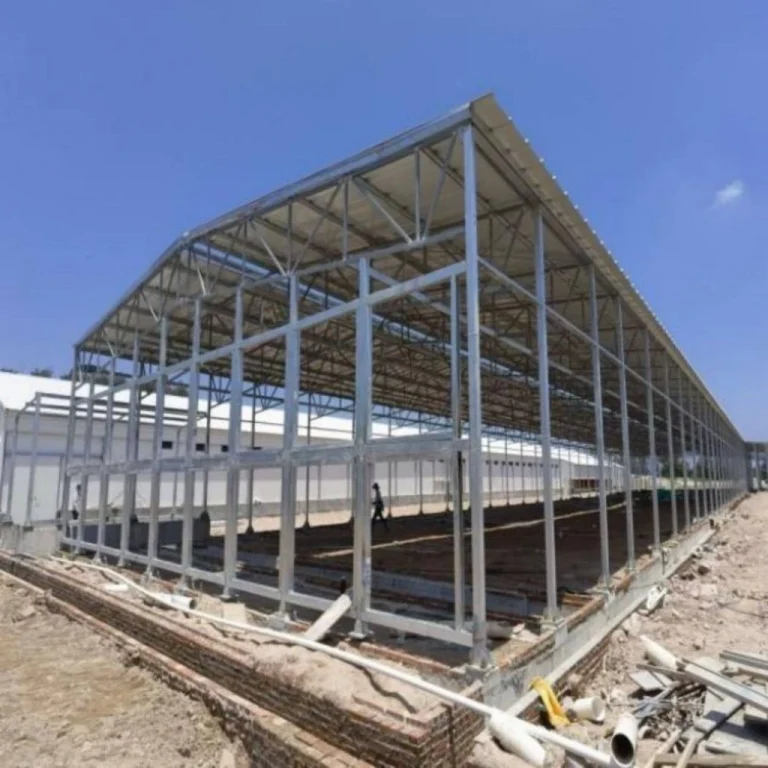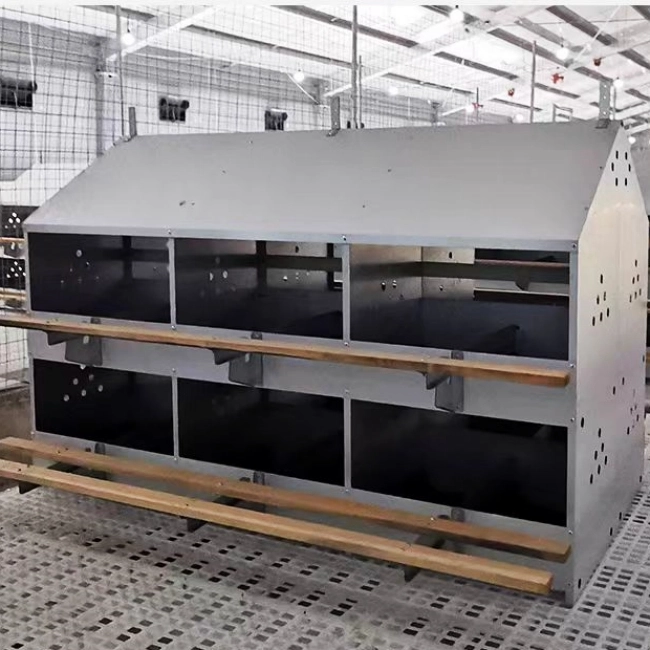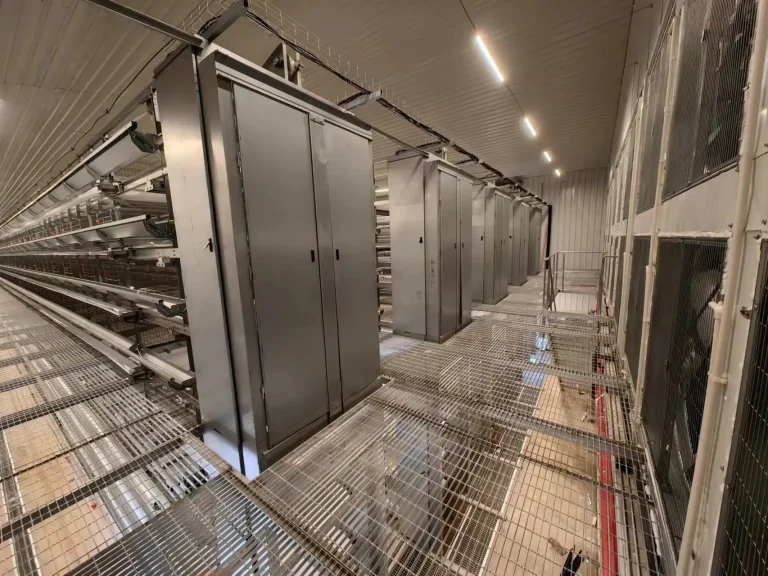Understanding the Basics of Chicken Incubators
Chicken incubators are tools created to imitate the required conditions for eggs to hatch successfully in a controlled setting typical in poultry farming practices These machines are essential, for ensuring high hatch rates and promoting the healthy growth of embryos It is vital to comprehend the principles of these devices to maximize their efficiency and achieve positive hatching outcomes.
Key Components of a Chicken Incubator
A chicken incubator setup needs key parts like the heating element to keep the temperature stable for embryo growth and a thermostat to control and maintain the temperature range that’s best for the development progress of the eggs, inside it. The egg-turning device replicates how a mother hen naturally rotates her eggs to prevent the embryo from sticking to the shell and ensure growth.
The Science Behind Incubation
In the field of incubation science, it’s crucial to recreate conditions accurately for best results. Temperature is key here; most chicken eggs need 99F (37C) to develop properly. Any big changes could lead to problems, in growth or unsuccessful hatching. Keeping the humidity levels between 40% and 50% and then upping it to 65% to 75% helps soften the membrane for chicks to hatch smoothly in the days of incubation.
Advanced Techniques in Chicken Incubation
Experts seeking to enhance their methods for hatching eggs have access, to strategies that can lead to better results and increased productivity.
Precision Temperature Management
Maintaining temperature control during the incubation process is crucial for ensuring the health of embryos by minimizing temperature fluctuations that could be harmful, to their development and growth. Some of the incubators are equipped with digital controls that enable users to set very specific temperatures with exceptional accuracy when compared to older methods.
Humidity Optimization Strategies
Strategies for optimizing humidity aim to adjust moisture levels during each phase of incubation with experts relying on hydrometers and automated systems that adapt based on current data feedback to avoid problems, like shrink-wrapping or drowning embryos caused by inaccurate humidity settings.
Maintenance and Troubleshooting of Chicken Incubators
Ensuring that you conduct maintenance and troubleshooting is crucial to extending the lifespan of chicken incubators and maintaining their performance consistently over time.
Regular Maintenance Practices
Regularly cleaning all parts thoroughly between hatching cycles is important to avoid the accumulation of bacteria and contamination risks in the incubator system. It’s an idea to inspect electrical connections and make sure that all moving components are well-lubricated to prevent any mechanical issues. Keeping sensors and thermostats calibrated regularly is essential for readings and maintaining the ideal conditions, inside the incubator.
Common Issues and Solutions
Chicken incubators often face problems like temperature changes and issues with humidity levels or mechanical failures such as malfunctioning egg turners and faulty thermostats. The solutions include inspecting power supplies and recalibrating sensors to keep the components in condition while ensuring that the ventilation systems are clear of any obstructions. Having a troubleshooting manual tailored to your model can prove highly beneficial, for promptly identifying any issues that may arise.
To boost their success, in hatching chicks and reduce the risks linked to incubation methods experts can delve into the intricacies of chicken incubation. This not only enhances productivity but also promotes the well-being of animals by guaranteeing sound chick growth throughout the process.
Innovations in Chicken Incubator Technology
Significant progress has been made in the field of hatching chickens due to advancements, in technology that improves effectiveness. The likelihood of success.
Automation and Smart Features
Today chicken hatcheries come with automation and intelligent functions to make the hatching process easier and lessen the reliance on constant human oversight needed before.” These upgraded systems usually have settings that can be programmed to control temperature and humidity throughout the hatching phase.” Smart hatcheries can link up with smartphones, for tracking and notifications.” This connection helps in handling any issues with the ideal conditions and lowering the chances of unsuccessful hatches.” Moreover, automated egg rotation devices have become increasingly accurate replicating the natural turning actions of hens precisely.
Energy Efficiency Improvements
Efficiency in saving energy has become increasingly important in managing poultry farms due to advancements in incubator technology that efficiently tackle this matter head-on. Modern incubators now come equipped with energy features like heating elements that consume less power and insulated chambers that keep temperatures stable using minimal energy resources effectively. Moreover, some incubators are designed to harness energy sources such, as solar panels to reduce their environmental impact even further. These enhancements not only cut down on operational expenses but also promote eco-friendly farming practices by reducing unnecessary energy consumption.
Enhancing Hatch Rates with Expert Tips
To achieve hatching rates you need to carefully choose good quality eggs and manage the incubation process with precision.
Selecting Quality Eggs for Incubation
A successful incubation process starts with picking top-notch eggs according to specialists’ advice which suggests opting for eggs from fed and healthy hens to promote strong embryo growth. It is important for the eggs to be uniform in size and shape without any cracks or abnormalities and should be gathered after being laid to maintain their freshness. Ensuring a temperature for storing the eggs before incubation is vital. Aiming for a range of 55 to 65°F (13 to 18°C) with a humidity level, of around 75%. Ensuring care during the collection and storage process reduces the chances of contamination and improves the likelihood of successful hatching.
Monitoring and Adjustments During Incubation
Regularly monitoring the temperature and humidity levels during the incubation process is crucial to creating conditions for embryo development in eggs experts suggest using calibrated instruments for accuracy Checking for any fluctuations in environmental factors or signs of inadequate embryo growth may require adjustments Candling eggs at specific intervals enables assessing the viability and growth of embryos This method aids in detecting nonviable eggs early to prevent any potential contamination, within the incubator Experts rely on observation data to make informed adjustments leading to better hatch outcomes.
Zeus Products: Revolutionizing Poultry Management
Zeus Products provides cutting-edge solutions for managing poultry by offering products that optimize operations and boost efficiency.
Egg Nest Solutions
Zeus egg nesting solutions that aim to improve the efficiency of collecting eggs while providing an environment for the laying hens. The nests are designed with bedding materials and ergonomic layouts to promote the hens’ natural laying behaviors. These nests also feature egg collection systems to minimize breakage and uphold egg quality throughout the process. Integrating these solutions into poultry farming operations can lead to increased yield rates with strain, on the flock well being.
Automatic Egg Laying Box
Zeus innovative egg-laying box is an advancement in managing poultry efficiently and effectively using cutting-edge technology. This device streamlines the egg collection process by detecting when an egg has been laid and carefully moving it to a safe storage location with the help of sensors. Its smart design limits interactions to lessen the chances of contamination while ensuring the eggs stay undamaged from start, to finish. Moreover, these contraptions can be tailored to accommodate flock sizes and farm setups offering adaptability to meet different operational requirements.






